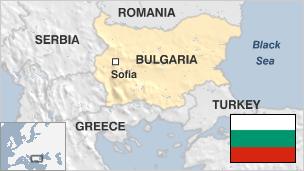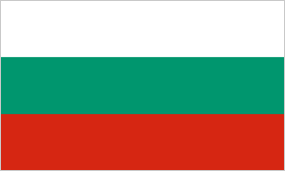Overview
Bulgaria, situated in the eastern Balkans; is a Balkan Slavic nation with diverse landscape ranging from the Black Sea coastline, iconic rivers such as the Danube river, the scenic valleys and plateaus of the Danubian Plain, and a mountainous interior. Bulgaria borders 5 countries: to the North is Romania, to the South we find Greece and Turkey, and Macedonia – Serbia to the west. The country has a lovely coastline of 354 km, while its total area covers 110,994 km square. The population of Bulgaria is 7,360,000 people with about 84% of these people being ethic Bulgarians. Bulgaria has a myriad of cultural influences including Slavic and Greek. Bulgaria, after the end of Communist rule, has been undergoing a steady transition to a market economy and became a member country of the EU in 2007, and a member of NATO.
 |
 |
 |
Socio-Economic Profile
Bulgaria undertook major structural economic reforms in the 1990s towards a market economy, and later became part of the European Single Market. Its economy comprises mostly of services followed by the industry and manufacturing sector (mainly machine building and mining) and followed by agriculture. Bulgaria is considered a developing country and ranks 52nd in the Human Development Index.
The sector contribution to the national GDP is as follows: Services at 67.4%; industry and manufacturing sector at 28%; and Agriculture: 4.3%.
26.6% of the labour force are employed in in industry, while about 66.6% are employed in the Services sector, and 6.8% of the labour force are employed in agriculture.
The major industrial activities include: mining of metals and minerals, machinery and equipment, automotive parts, base metals and steel, chemical products, biotechnology. coke, petroleum refining, nuclear fuel, production of electricity, gas, water; food processing and beverages, tobacco, outsourcing centres. As a sub-sector of industry, all mining-related, and value-add industries employ roughly 120,000 people and generate around 5% of the country’s GDP. Bulgaria is Europe’s 5th -largest coal producer and still has excellent reserves of coal, iron, copper and lead.
Bulgaria’s Agriculture products include fruits, vegetables, tobacco, wine, wheat and barley, sunflower seeds, sugar beets and livestock; and on an international level Bulgaria is the single biggest producer of lavender and rose oil, widely used in the production of fragrances.
 City of Sofia |
 Bulgarian farmlands |
 Port of Burgas |
Most of the exports are manufactured goods, machinery, chemicals, fuel products and food and agricultural products.
Bulgaria’s sovereign credit ratings are as follows: Standard & Poor’s credit rating is at BBB with positive outlook. Moody’s credit rating is at Baa2 with positive outlook, and Fitch’s credit rating is presently at BBB.
Tourism
Between 2012 up to 2017 there has been an annual 6% growth rate of tourist arrivals, outperforming the EU and world averages; while in 2017 Bulgaria attracted about 12 million foreign tourists. Tourism is a significant contributor to Bulgaria’s economy, contributing around +/- 13% of the GDP, producing a revenue of around 4.3 billion Euros in 2018, and of which 70% was generated through summer tourism, mainly represented by sea resorts along the Black Sea coast.
Bulgaria located at the crossroads between Eastern and Western Europe, has by virtue of its situation, been home to many mighty civilizations such as the Romans, Greeks, Byzantines, Bulgars and Slavs. These civilizations have all contributed towards the rich cultural heritage, amazing tourist sights and historical artifacts. Bulgaria has also developed its own seaside and winter resorts, that have grown in international standing.
 Aerial coastline beaches |
 Black Sea beach resort |
 Veliko Turnovo |
Brief Socio-Economic Profile – 2019
Population: 7.1 million
GDP (PPP): $153.1 billion
GDP Growth: 3.6%
GDP 5-yearcompound annual growth: 2.7%
GDP per capita: $21,687
Unemployment Rate: 6.2%
Inflation Rate (CPI): 1.2%
Foreign Direct Investment (FDI) Inflow: $1.1 billion
Bulgaria is ranked 19th among 44 countries in the Europe region.


